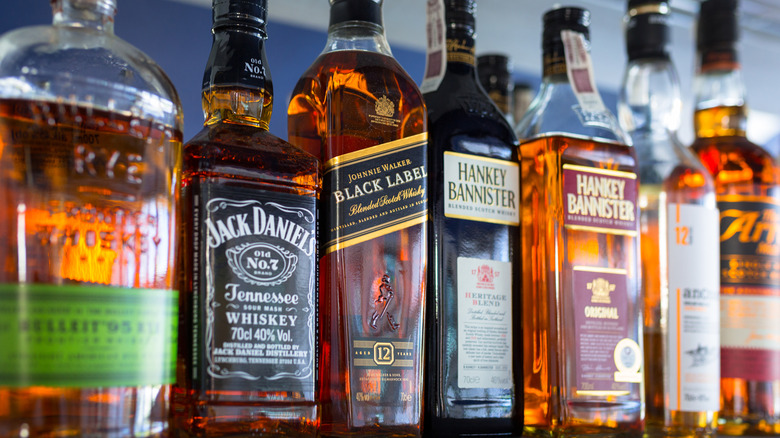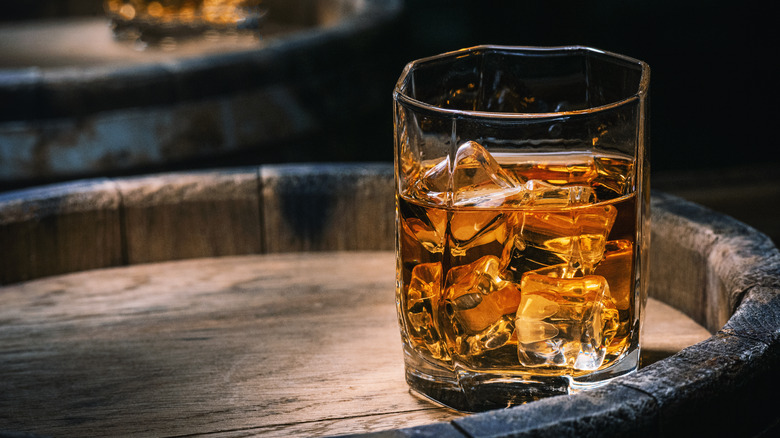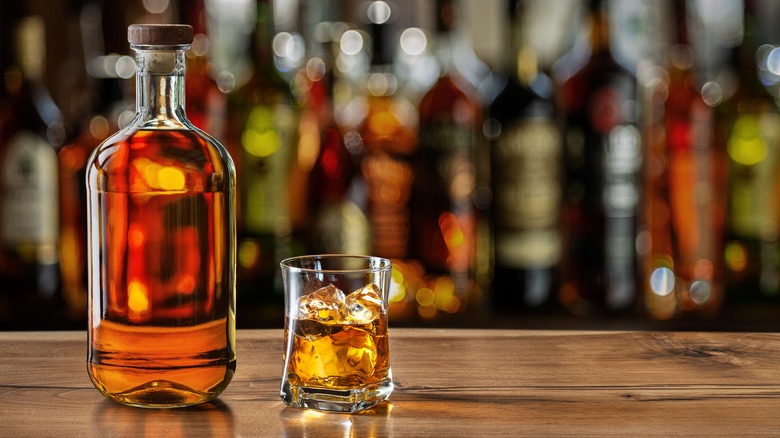How To Store Whiskey Like A True Connoisseur
Whiskey can be an expensive tipple, so when you invest in a decent bottle, it's important to store it properly so that it can be enjoyed at its best. Whiskey needs to be stored upright (unlike wine) in a cool, dark place (like wine). But, assuming you don't have access to a cellar, it's possible to create an environment at home, which will keep it in the optimum condition.
When it comes to which room in your house is best to store a bottle of whiskey, choose whichever room is the coolest – whether that's one that's air-conditioned, or maybe even a garage. You'll want to keep the bottles away from direct sunlight, so inside a cabinet is a good idea, perhaps a glass-fronted cabinet if you want to show off an impressive collection. If the whiskey came in a box, then keep it stored in the box for added protection. Ensure it's at a stable and consistent temperature, ideally between 55 to 60 degrees Fahrenheit.
The kitchen may not necessarily be the best place to store whiskey because of the fluctuating temperatures, and bottles should also be kept away from heat sources, such as a stove. If the temperature is too warm, the bottle can expand, and you may find that some of the precious whiskey begins to evaporate. But if it's too cold, the drink can become cloudy, so it's not advisable to store your bottles in the refrigerator or freezer, either.
Sunlight and oxygen cause opened whiskey to deteriorate
While a properly stored unopened bottle of whiskey can last a long time, once it's been opened, it can start to deteriorate if not kept correctly. The biggest culprits are exposure to sunlight and oxygen.
Just as keeping bottles out of direct sunlight can prevent beer from skunking in storage, keeping whiskey bottles away from the light helps to preserve the color and flavor of the beverage inside, which is just as important whether it's a pricey single malt or a great value bourbon. Exposure to UV rays can cause the color of the whiskey to lighten, and sunlight can also cause the label on a bottle to fade, which is not ideal if it's a particularly rare tipple.
And, just as with sunlight, exposure to air can also damage whiskey and cause it to slowly become oxidized. Once opened, and there is about half a bottle left, it may be best to decant the remainder into a smaller bottle, or a well-sealed decanter, so that less air can get to it. This will help to slow down the process of oxidation.
Store whiskey bottles upright, not on their side
Unlike wine bottles, which are best stored on their side, the best way to store bottles of whiskey is upright. Because of whiskey's stronger alcohol content, which is at least 40% ABV, the liquid can actually cause the cork to start eroding. And while wine corks are not designed to be used over a long period once the bottle is open, whiskey corks are used repeatedly and over a longer time.
But even so, you don't want the cork to dry out too much, either. If the cork becomes too hard and brittle, it can become less effective at sealing the bottle, or bits can break off into the drink. So two or three times a year, tilt the bottle so that the cork becomes fully moistened by the whiskey, then store it upright again.
Once you've opened a bottle of whiskey, it can last up to two years if stored correctly. But if you've got a half-empty bottle, it's best to consume it within about six months before it starts to lose its character — while a quarter-full bottle should be drunk within three months for the best-tasting tipple.



